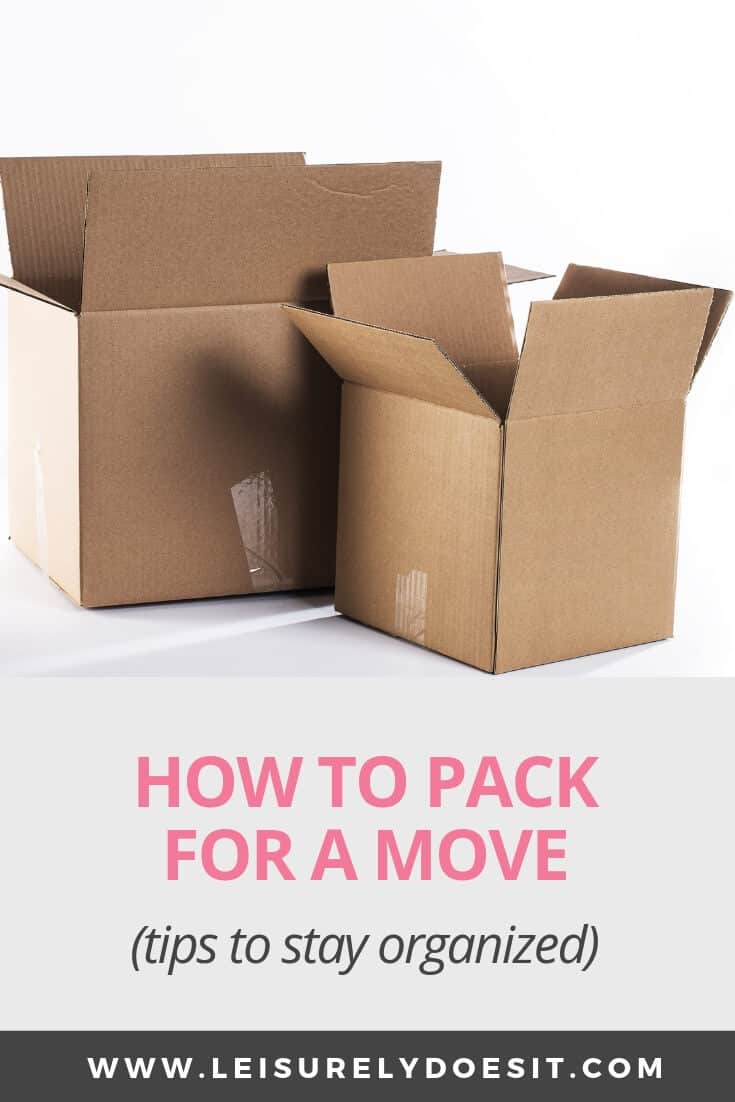
Moving to a new house is an incredibly exciting time but packing is often one of the most stressful parts of that process. You need to somehow stay organized while going through all of your possessions one at a time. And, for the average person who has a ton of stuff, that can be very daunting.
If you’ve signed your name on the dotted line and are preparing to make the trek to a new place, you don’t want to miss out on these tips. Below you’ll find all the information you need to stay on schedule and protect your belongings for a smooth transition into your new home.
When to Start Packing for A Move
This post contains affiliate links. If you click and make a purchase, there’s absolutely no extra cost to you. Read my full Disclosure Policy here.
The more time you have to box up all of your things, the better. Having a plan and knowing when to get tasks done will keep your sanity intact. Here’s a moving timeline for you to follow:
At Least 2 Months Before
- Declutter before moving. Sort through every drawer, closet, cupboard and shelf and remove items you no longer need or like. Donate or sell items that are in good condition.
- Create an inventory of anything valuable that you plan to move and take note of their value for insurance purposes.
- Get estimates from moving companies, if you plan to use one and select the one you want to use. Transportation costs can be very expensive. Set aside the money.
6 Weeks Before
- Get copies of your medical records and store these with your other important documents.
1 Month Before
- Order packing supplies, if you’re packing yourself and start packing.
1 Week Before
- Arrange payment for movers
- Confirm delivery date with the moving company. Write directions to the new home, along with your cell phone number.
- Have rugs cleaned and wrapped for moving
- Get health certificates from the vet for pets, if travelling by air.
- Pack suitcases with items you plan to keep on hand e.g. toiletries, important documents, jewelry and clothes.
On Moving Day
- Take a final tour of the house. Lock windows, doors and turn off all the lights. Make sure nothing has been left behind.
Gather Essential Packing Supplies
Here’s a list of items you’ll need to pack up all your belongings:
- Basic tool kit for taking furniture apart
- Boxes – These can be purchased from your moving company, a packing supply store or get them for free from your local grocery store. Wardrobe boxes are great for transporting your clothing still on the hangers.
- Box cutters
- Bubble wrap. Buy this in rolls so you can easily wrap breakable items or pad boxes as needed.
- Stretch wrap for securing drawers and doors of cabinets
- Packing paper. Avoid newspaper which can stain your possessions. Instead stick to white or blank newsprint.
- Tissue paper for lamp shades
- Small sealable plastic bags for storing items like screws and even jewelry
- Packing tape
- Labels
- Sharpies for labeling boxes
- Notepad and pen
- Large trash bags
- Scissors
How To Pack A Box For Moving
I know, I know, packing boxes for moving house might seem really simple but there’s a correct way to do it. So, in the attempt to be thorough, here goes.
- Assemble the box and secure the bottom with packing tape. Packing tape is incredibly sticky and strong so make sure to use this type. For additional reinforcement, apply a piece of tape perpendicular to the main seam, especially if heavy items are going inside the box.
- Crumple packing paper and line the bottom of the box to produce a cushion for the contents.
- Place extra paper in the corners since these will take the main impact if you or the movers drop the box.
- Wrap the contents in more packing paper or bubble wrap, then put them inside the box. Leave room along the sides and top for more packing paper.
- Don’t leave the boxes half-empty because they will collapse if more boxes are stacked on top.
- Fold the box flaps down as intended instead of interlocking them.
- Tape the box shut and label. Place the label on the side so you can see it easily.
General Moving House Packing Tips
Now that you know your moving timeline and you have all your packing supplies at hand, here are some tips for successful packing. Not only will these ideas help you pack all your stuff without the stress, unpacking will be a breeze too!
- Using professional movers? Let them pack the fragile stuff. Not only are they more experienced with doing this particular job, they’re liable for anything they pack themselves.
- Pack items from one room at a time. This makes it really easy to keep items separated according to where they need to go in the new house.
- Avoid mixing items from different rooms in the same box. This will make unpacking simpler.
- Clearly label each box with your name, the room the box belongs to, a general list of the contents, an arrow indicating which side is up and “Fragile”, if the items inside are breakable. If you really want to step up your packing game, create an electronic copy of all the items in each box (using Google sheets, for example). Assign a number to each list and put that number on the box. This is a great way to stop the movers from knowing what personal or valuable items are in each box but you’ll know exactly where everything is. Numbering the boxes also means you’ll know exactly how many you had in case one or more goes missing during shipping.
- Color code labels and give each family member and room a specific color so you’ll know which boxes belong to whom or which room at a glance.
- Use small boxes for heavy items and large boxes for light ones. Pack heavier items to the bottom and light things near the top. Test if you can easily pick up each box before taping it shut.
- Don’t pack flammable items.
- When packing, leave essentials that you’ll need to use right up to moving day e.g. hand soap. Make sure to pack these up in one box for your first night in the new house (see list of first night essentials below).
How To Pack To Move House, By Category
Furniture
- If you need to disassemble furniture, place the hardware in a sealable bag and attach it to the furniture. Don’t use tape or adhesives on stained or painted wood because it might damage the finish. Label the bag in case it becomes detached.
- Don’t be afraid to turn large pieces of furniture upside down when packing to make items fit better in the storage truck
Toiletries
- Cover the tops of bottles with plastic wrap to avoid spills. You can take the cover off, add a piece of plastic and replace the lid. Put these inside a plastic bag in case they do spill to prevent them from ruining other boxes.
- Place makeup in a sealable plastic bag. It would be awful to arrive at your new home just to find powder all over everything.
Clothing
- If you’re wondering how to pack clothes for moving, put folded items in suitcases or in boxes.
- Store hanging garments in wardrobe boxes. There’s no need to remove the hangers and they can go straight from the old closet to a box to the new closet.
Electronic Equipment
- Check manuals for instructions about moving each piece of equipment. Printers, for example, have special requirements. If you can’t find an instruction manual, look for it online.
- Make sure equipment is cool before packing it
- Take photos of how electronics are set up before you take them apart to pack them.
- Label all cords so you know which electronics they belong to.
- To lessen the chance of theft, don’t list the electronics inside the box. Instead, write the name of the family member it belongs to or the room it will be stored in. If you use the handy numbering system and electronic list I mentioned earlier, you won’t have to worry about this.
Books
- Pack books flat and keep similar sizes together. Slip a piece of packing paper between each book if they’re valuable.
Files
- Take important documents e.g. birth and marriage certificates and bank records with you whenever possible to avoid identity theft. Make copies of the important documents and pack those separately as a back-up.
- If you have lots of paperwork, secure the file box with tape all around the lid and write your initials on the tape. That way you can see if the seal has been broken.
Lamps
- Disassemble the lamp by removing the shade, bulb, harp and finial.
- Store the base in an upright position in a box.
- Wrap the lamp shade in tissue paper and place in a separate box lined in more tissue paper
- Put the harp and finial inside the box with the lamp shade.
- Wrap the bulb in bubble wrap and place inside a box.
Here are detailed instructions for packing lamps.
Dishes, Cups and Stemware
- Store china and glasses in boxes designed for those items.
- Wrap plates and bowls with packing paper and store them vertically in the box lined with crumpled packing paper or bubble wrap. Plates are more prone to breaking when stacked horizontally.
- Stuff cups and glasses with paper. Wrap each individual piece with more paper. Store upright in lined boxes.
- Remember to label these boxes “Fragile” and “This Side Up”.
Appliances
- Wrap each small appliance in packing paper or bubble wrap to protect it and prevent breakage or scratching.
- Use stretch wrap to prevent your toaster oven door from popping open during transit.
- Clear out the refrigerator so the moving company can package this appliance up.
- Let the professionals pack the large appliances such as the stove, fridge and dishwasher.
Other Items from the Kitchen
- Place knives in sleeves made specially for them or wrap in paper and bubble wrap. Clearly label these so you can be careful of the blades.
- Stack pots and pans inside each other, if possible, so they take up less space. Grab the largest pan, line the bottom with paper and place the next size inside. Continue adding smaller pans in this manner until you’ve finished.
- Pack food storage containers and their lids in the same box so you’re not hunting for them later.
- Only pack non-perishable food items.
Moving In Essentials
Earlier I mentioned that you should save some items for last when packing for a move. These are things that you’ll need right up to when you lock the door behind you for the final time. You’ll also need these essentials on your first night and day in the new home. Put them in the moving truck last so they’re the first things you take out.
If you’ve been wondering, “What should I pack in my first night box?”, here’s the list:
- Toiletries
- Medicine – Make sure you take prescriptions with you instead of packing them
- Non-perishable snacks
- A basic toolkit
- One set of bed linens for each bed
- A towel for each family member
- A change of clothes for each family member
- Cleaning supplies
- Disposable plates, cutlery and cups
- Napkins and paper towels
- Flashlight
- Lightbulbs
- Telephone
- Toys for children and pets
What To Do At The New House
- Have the final payment ready for the moving company
- Get a list of all the boxes and loose objects, plus make a note of the condition they arrived in. If there’s any damage, make sure to record it on the mover’s copy of this list.
- Let the driver sign the inventory list in case it’s needed for insurance purposes
- If you discover a damaged item while unpacking, leave that box alone until a representative from the moving company comes to inspect it.
- Get the basic tool kit from the essentials box for furniture assembly.
Now you know how to pack for a move. These tips should definitely make the process of packing clothes, kitchenware and everything else in your home much easier. Unpacking should be less of a headache too.
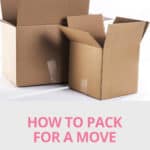
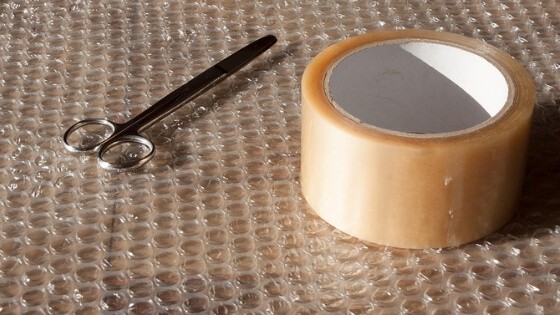
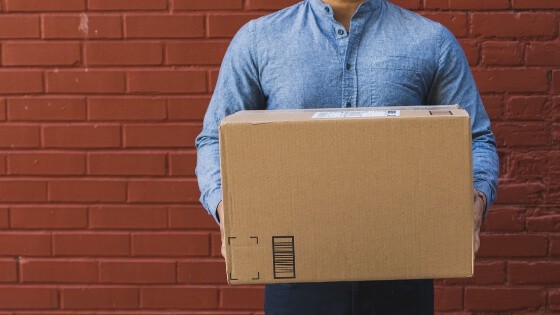
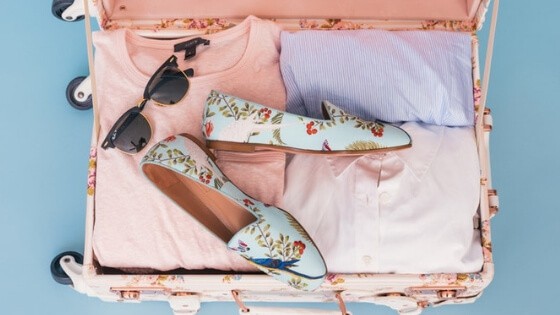

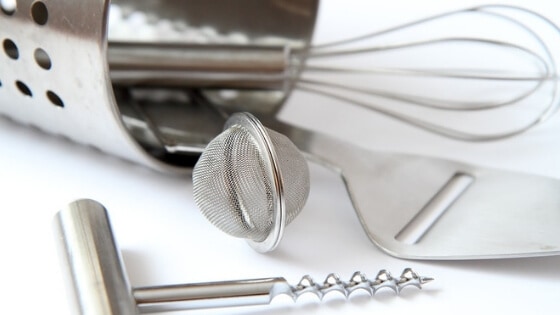
I really enjoyed reading the article above, You have explained everything in detail about the move. Surely I will use these tips to move. Thanks!
Great! I’m glad you found it helpful.
Packing yourself is a long process. Last time I moved I packed most of a 2500 sqft house myself. It took more than 2 months and I think that next time I will hire a team of professional moovers to pack my stuff.